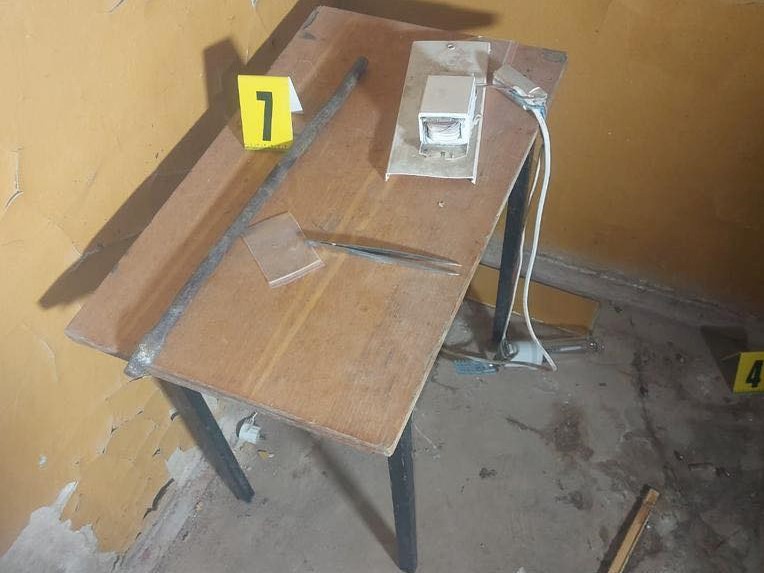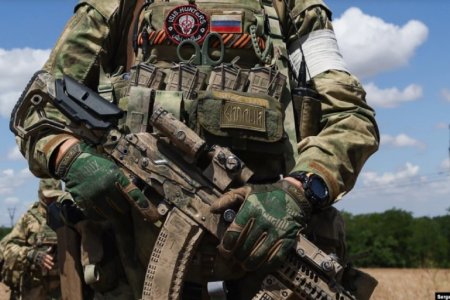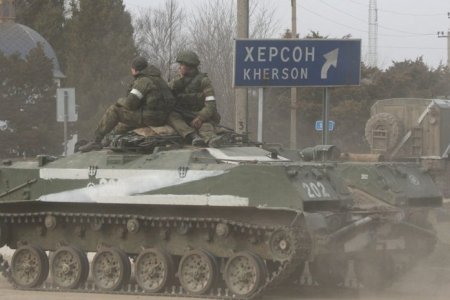
Ukraine’s Police and SBU have uncovered yet another location, this time an office centre, where the Russian invaders held and tortured around 50 Ukrainians. Their victims included teenagers who were imprisoned in one of these basements in horrific conditions, for having ripped up a Russian flag.
On 17 November, Oleksiy Serheiev from the National Police stated at a briefing that 461 war crimes had already been recorded on liberated parts of Kherson oblast. He reiterated that 11 places used as prisons had been found, with four of these having been used as torture chambers.
‘Ukrainian Witness’ has videoed in parts of the former office centre which Russia’s FSB [security service] seized after taking Kherson and used as its centre. As always, the invaders had used the large basement area as a prison, and place for carrying out torture. The Ukrainian Witness correspondent could only see a small part of the whole as other areas are still in the process of being cleared of mines. In fleeing the Ukrainian Armed Forces advance, the Russians tried to set fire to evidence of their crimes. They probably succeeded in destroying some of the documents but did not manage to cause a significant fire.
According to SBU spokesperson Viktoria Shakula, they have found items in this ‘prison’ that provide evidence of torture to which local residents were subjected. These include plastic batons and a part of a heating radiator hanging on the wall, which the hostages were handcuffed to. While some of the premises had no light at all, in others, there was glaring light which was never turned off, making it impossible to sleep.
The video makes it clear just how terrible such incarceration was, even before the torture which many, if not most, endured. On the walls of these dungeons, you can see prayers etched out, as well as the crosses that many hostages use to try to understand how long they have been imprisoned. In some cases, there are a huge number of crosses. Local residents report that bloodstains and other results of torture were cleaned every day.
While the Russians targeted Kherson residents with a strong pro-Ukrainian stand, and those caught demonstrating resistance, they also abducted many Ukrainians purely to extort money from them.
On 18 November, Ukraine’s Ombudsman, Dmytro Lubinets stated that Ukrainian hostages were subjected to more brutal torture in Kherson oblast than in the parts of the Kyiv, Kharkiv and Chernihiv oblasts that had been under Russian occupation. He points to several differences, including the fact that in Kherson oblast, the invaders imprisoned even very young lads, with witnesses saying that some of the lads looked around 14 years old. Despite all the other atrocities found elsewhere, there have not been others where children and teenagers were held prisoner. In fact, Lubinets may be exaggerating this difference as at least one 16-year-old lad from the Zaporizhzhia oblast, Vlad Buriak, was abducted, and held hostage for three months. During that time, he was forced to clean up the blood, etc., from the room that the invaders used to torture other hostages.
Another difference is that in the Russians’ prisons in Kherson oblast, there were cases where, for weeks, men and women were held prisoner together. This is in conditions where the hostages were not taken out if they needed to use a toilet.
A further specific feature was that in each cell there were video cameras with the Russians both watching and listening to their hostages. Ukrainians who were subjected to torture recount that they were well aware of such surveillance, Whenever they began talking about the Russian occupation, men in masks would burst in and begin savagely beating them.
Lubinets suggests that the Russians may have been reacting with increased brutality because they were encountering people with a firm pro-Ukrainian position. “This is not simply intimidation as before, this is more demonstrative, brutal, so that all know of it. The aim is to break Kherson residents so that they’re afraid and are silent, so that they don’t go out on protests and express their identification with Ukraine.”
The Ombudsperson’s comments coincided with the publication of a report produced as part of the Conflict Observatory by the Yale School of Public Health’s Humanitarian Research Lab. The report documents the detentions and disappearances of 226 people in Kherson oblast between March and October 2022. Around 25% of those whose cases were known had allegedly been tortured, with five having died either in custody or shortly afterwards, allegedly because of the torture they endured. Less than half had been released, with the whereabouts of many of them unknown. “These findings demonstrate a range of alarming allegations about treatment of detainees, including allegations of deaths in custody; the widespread use of torture and cruel, inhuman, or degrading treatment; pillage from detainees; sexual and gender-based violence; forced participation in propaganda videos; enforced disappearances; potential reprisal detentions; threats to relatives; and monitoring, tampering with, or seizure of electronic devices. At least one individual reported witnessing the execution of five prisoners of war detained at the same location as him. Among the accounts of torture and CIDT were allegations of beatings, electric shock, sleep deprivation, stress positions, sensory overload, temperature manipulation, mock executions, denial of medical care, denial of sufficient food and water, and overcrowding.”
The report notes the disproportionate number of Crimean Tatars who have been seized by the Russians and the fact that they are particularly likely to end up facing ‘criminal charges’. As reported here, most of these Crimean Tatars, who were seized in their own homes or at checkpoints at the administrative border with occupied Crimea, end up charged with unproven involvement in the perfectly legal Noman Çelebicihan Battalion which, despite its name, is a civic and unarmed organization which was active in mainland Ukraine. Others who were abducted from their homes in Kherson or Zaporizhzhia oblasts have also been illegally taken to occupied Crimea where the terrorist Russian state is accusing them of so-called ‘international terrorism’.
See: Staggering lawlessness in Russia’s persecution of a Crimean Tatar from mainland Ukraine
63 bodies of Ukrainians tortured by Russians already found in liberated Kherson oblast
The Conflict Observatory can be read in full here.



